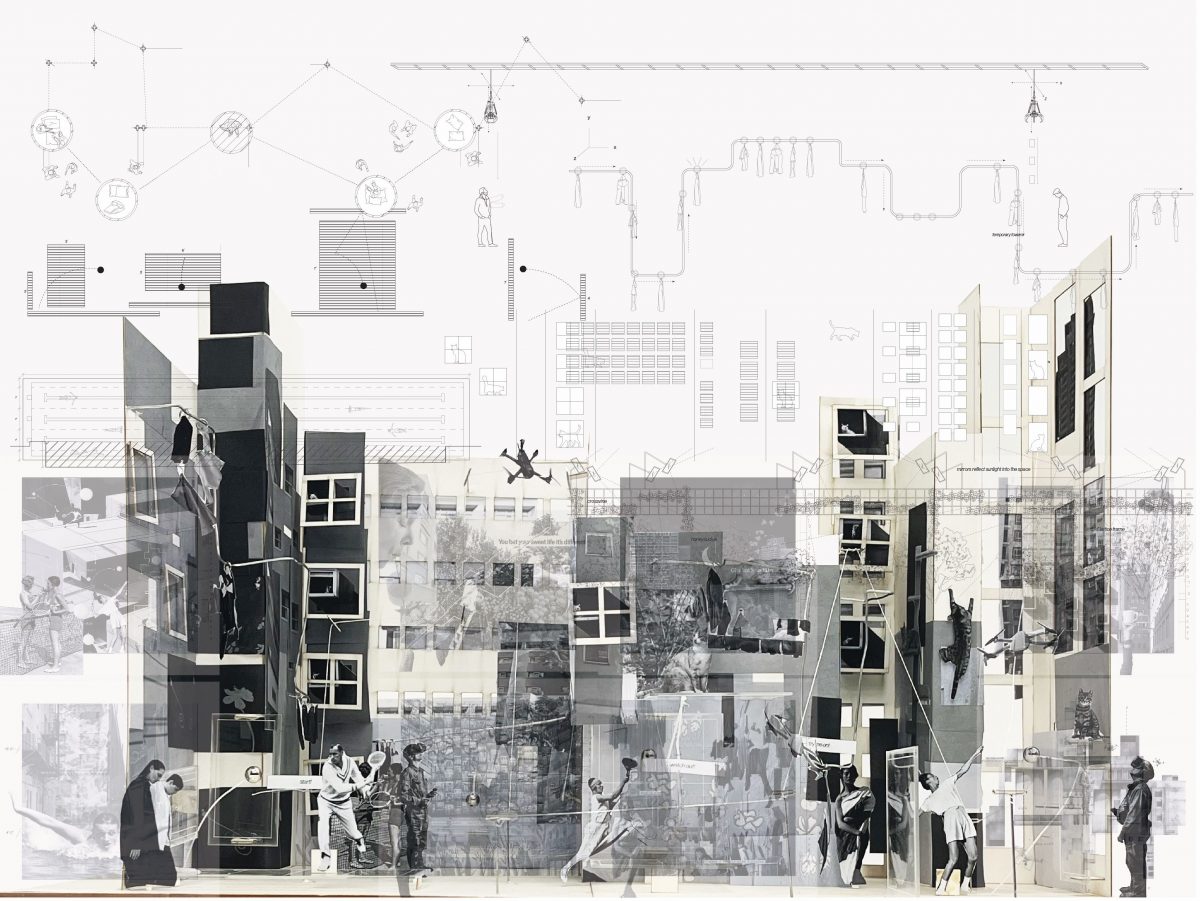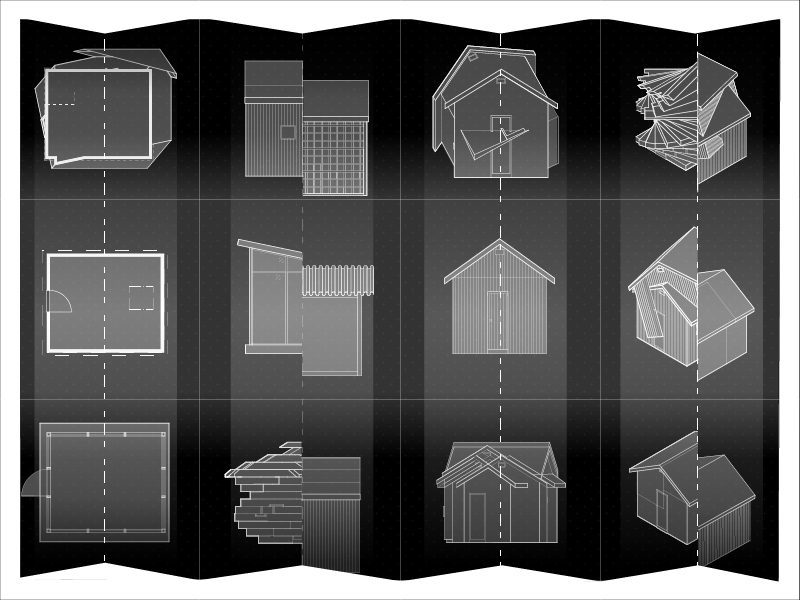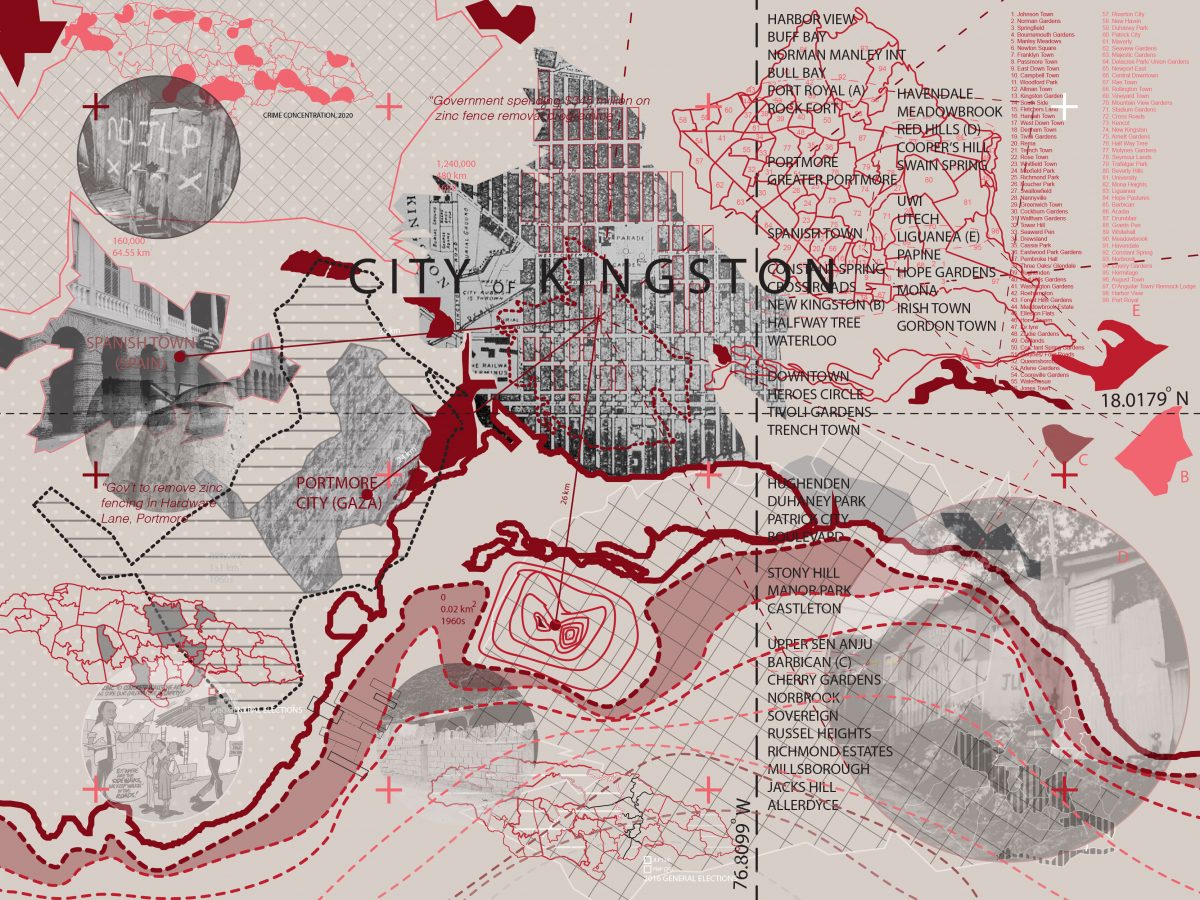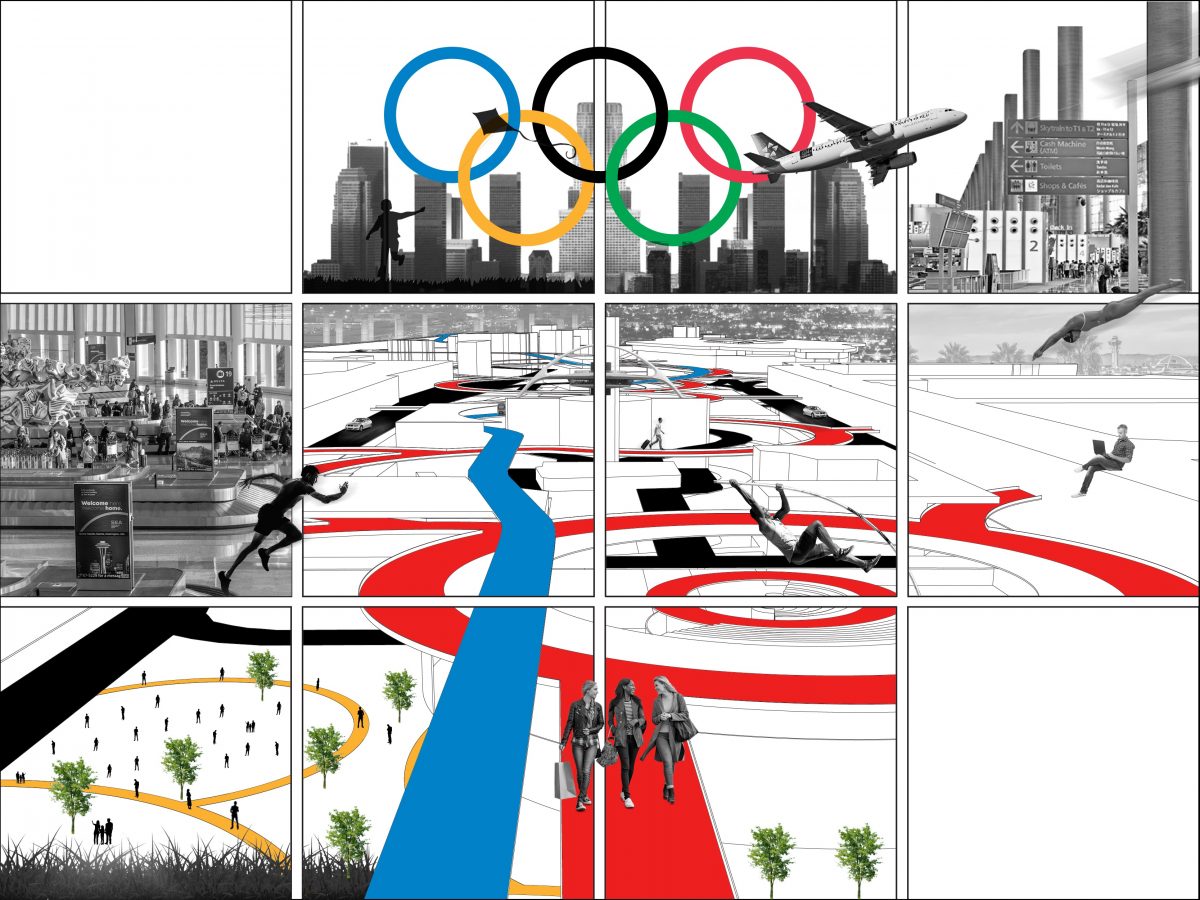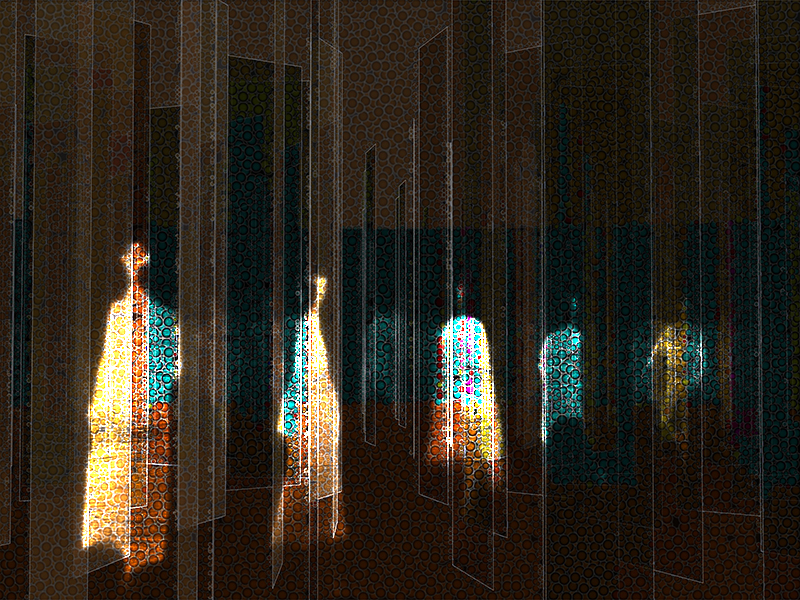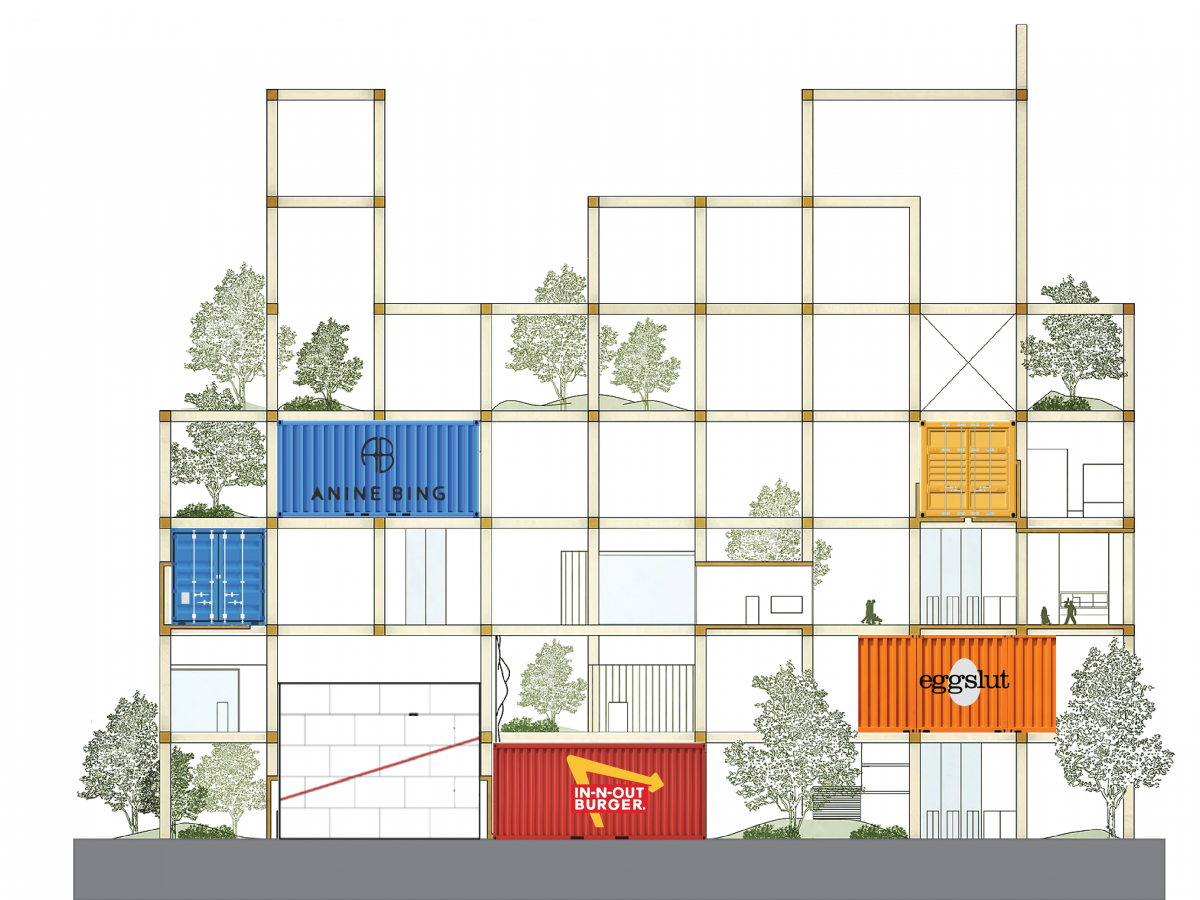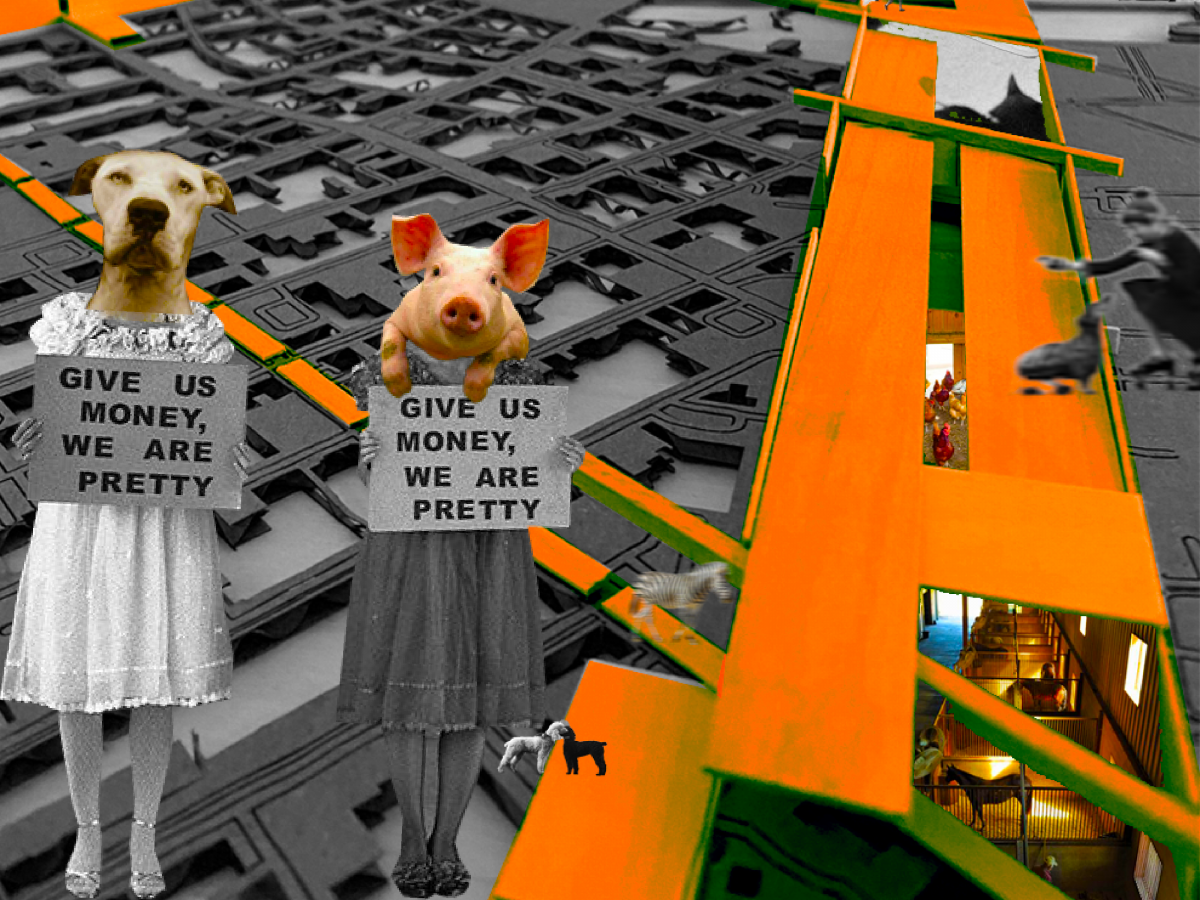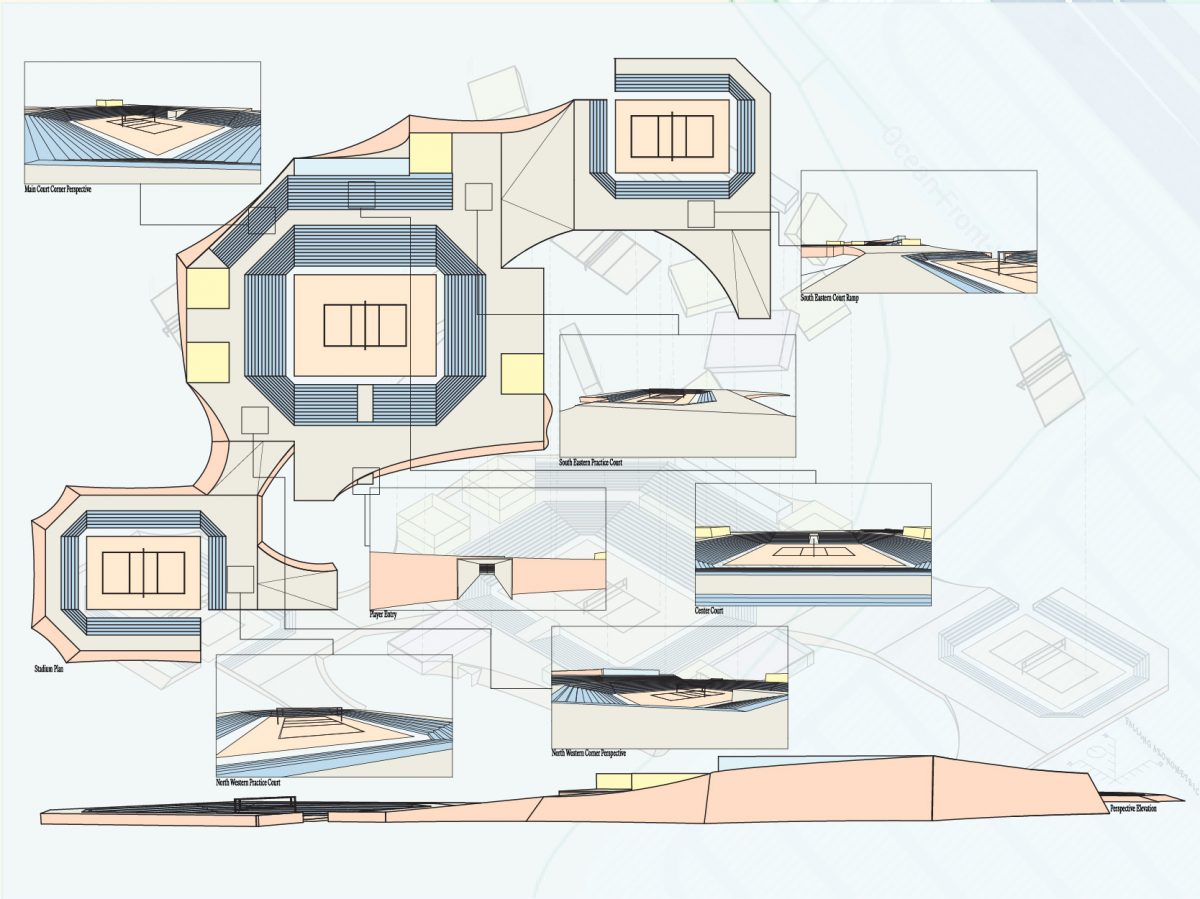Dream City recognizes the potential of liminal and underutilized spaces within the contemporary metropolis. It re-imagines the void alley network of DTLA as a threshold to alternate urban possibilities. This thesis blurs reality and fantasy, presenting a liminal network shaped by dreams and desires. Void spaces are hijacked by dreamscapes, fusing themselves into a heterotopic network adjacent to the built environment.
Speculative narratives exploit the potential of navigating these environments, prompting reflection on spatial perception. It inspires new ways of thinking about the relationships between architecture, narrative, and time.
This thesis challenges designers to reconsider their role in shaping reality and imagine new transcendent experiences beyond spatial limits and disciplinary devotion to the “real.”
